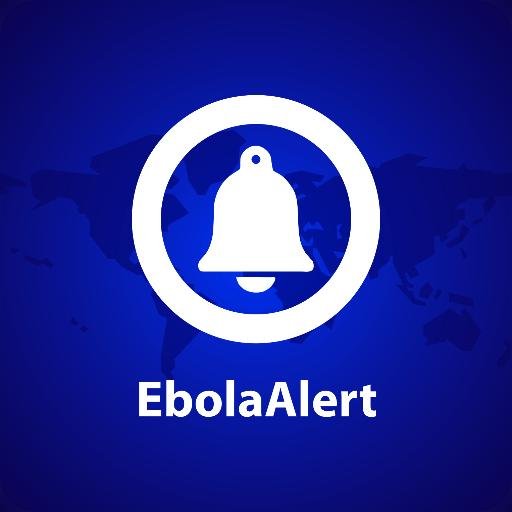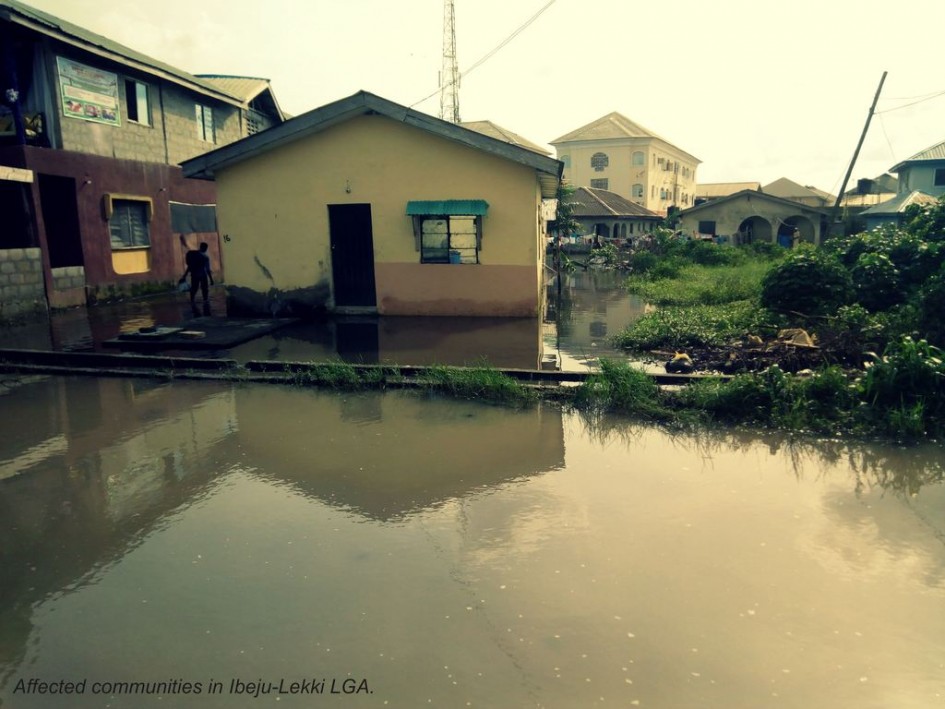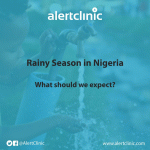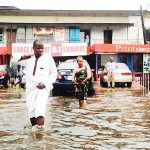Warning: Illegal string offset 'source_type' in /home/mychutej/public_html/blog/wp-content/plugins/egany-facebook-to-wp/egany_facebook_to_wordpress.php on line 1099
“A visit to some communities in Ibeju-Lekki and its environs over the weekend gave a clearer picture of the level of devastation and community health disaster caused by the unfortunate incident as many families were seen evacuating water out from their already flooded homes. Careful study revealed that residential areas have been affected by flood as residents construct temporary bridge for easy passage into their homes. The flood has also impacted negatively on the environment and the general public as movement within the community is been restricted thus causing heavy traffic. It has also brought about improper refuse dumping and blockage of drainage and the residents are left with no electricity, sourcing water from wells and rain to cook and wash dishes.
I was glad to note that the Chairperson of my Ward has been in talks with the Local Government Chairman about a lasting solution to problems of refuse disposal in the area.”
–An account from a resident of a flooded area in Ibeju-Lekki LGA.
Hydro-meteorological disasters, like floods, are the most common (40 percent) natural disasters worldwide and are widely documented. The public health consequences of flooding are disease outbreaks mostly resulting from the displacement of people into overcrowded camps and cross-contamination of water sources with faecal material and toxic chemicals. Flooding also is usually followed by the proliferation of mosquitoes, resulting in an upsurgence of mosquito-borne diseases such as malaria.
It is often assumed that when a disaster occurs, it is the sole responsibility of local or national governments and other professional response organizations to help victims in affected communities. The safety of health is a joint responsibility, with each person empowering the next with information that can change health outcomes. This connection fosters community resilience.
Community resilience is a broad concept.
For example, psychologists define resilience as a capacity to draw upon personal and social resources to deal with adversity and manage the consequences of disasters. For them, individuals or households are the primary units of analysis.
Sociologists and emergency management scholars, on the other hand, apply resilience to understand how social systems (e.g., organizations and communities as a whole) adapt to extreme events. For social scientists, resilience is more of a collective capacity or collective action taken by all constituent parts of a community.
The prolonged health impact of natural disasters on a community may be the consequence of the collapse of health facilities and healthcare systems, the disruption of surveillance and health programmes (immunization and vector control programmes), the limitation or destruction of farming and economic activities (scarcity of food/food insecurity), or the interruption of ongoing treatments and use of unprescribed medications.
Floods can potentially increase the transmission of the following communicable diseases:
- Water-borne diseases, such as typhoid fever, cholera, leptospirosis and hepatitis A
- Vector-borne diseases, such as malaria, dengue and dengue haemorrhagic fever, yellow fever, and West Nile Fever.
The collective action taken by all constituent parts of a community, from members of a family to committee members of a residents’ association, can make the difference in the aftermath of a flood.
Modifying token behaviour is a step in the right direction. Every resident must know the practices and remember key instances to implement them, such as:
Drinking clean water, safe for drinking
- Bottled water with unbroken seals and canned/bottled carbonated beverages, registered by the authorizing body, are safe to drink and use.
- Boil or treat drinking water with a chlorine product.
- If boiling, bring water to a complete boil for at least 1 minute.
- If a chlorine treatment product is not available, household bleach can be used to treat water. Add 8 drops of household bleach for every 1 gallon of water (or 2 drops of household bleach for every 1 liter of water) and wait 30 minutes before drinking. Store treated water in a clean, covered container
Use of Safe Water
- Use safe water to brush your teeth, wash and prepare food.
- Clean food preparation areas and kitchen utensils with soap and safe water and dry completely before reuse.
Handwashing
- Before eating food
- After handling uncooked foods, particularly raw meat, poultry or fish
- After going to the bathroom
- After changing a diaper or cleaning up a child who has gone to the bathroom
- Before and after tending to someone who is sick
- Before and after treating a cut or wound
- After blowing your nose, coughing or sneezing
- After handling an animal or animal waste
- After handling refuse
Good sanitary practices
- Use latrines or toilets, and avoid open defecation
- Wash hands with soap and safe water after defecating
- Clean latrines and surfaces contaminated with faeces with water and bleach
If a latrine is unavailable
- Defecate at least 30 meters (98 feet) away from any body of water and then bury faeces.
- Dispose of plastic bags containing faeces in latrines, at collection points if available, or bury it in the ground.
- Do not put plastic bags in chemical toilets.
Resilience is needed if the people of Ibeju-Lekki and other affected areas want to deal with the flood incident using their own capacity and resources. This flood disaster must be perceived as a catalyst for change, growth, and development.
Join the discussion via #LagosFloodSafety on @AlertClinic and @EbolaAlert













Leave a Reply